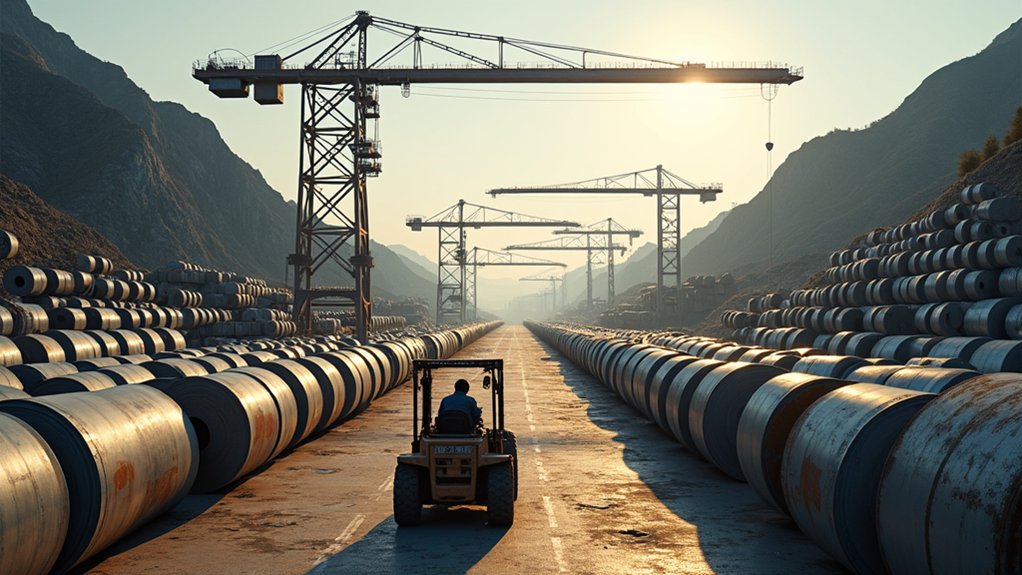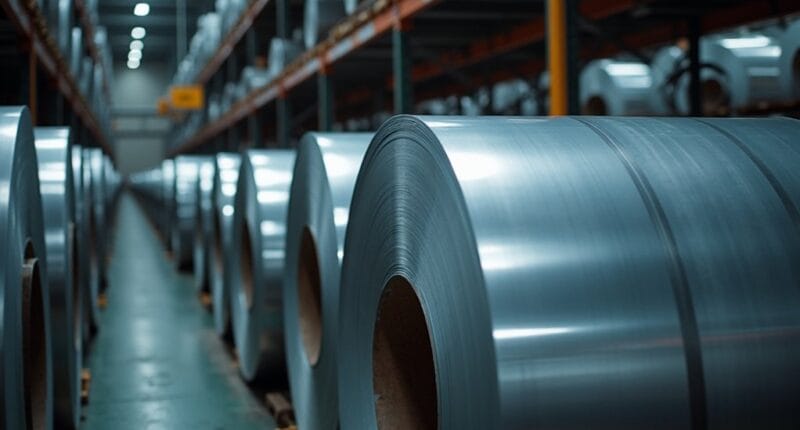The 25% tariffs on steel and aluminum imports have rattled markets and sent prices through the roof. Hot-rolled coil steel hit $900 per short ton, while aluminum soared to $2,512.65. Manufacturing costs are climbing, consumers are sweating, and industry stocks have taken a nosedive – the MSCI World Metals and Mining Index plunged 50% since 2023. With Chinese demand growing and Russian sanctions looming, this roller coaster’s just getting started.

Nearly every major steel and aluminum product has skyrocketed in price following aggressive new tariffs slapped on U.S. trading partners in February 2025. The sweeping 25% tariffs, hitting both steel and aluminum imports without mercy, sent markets into a predictable frenzy. No exemptions this time – not even for Canada and Mexico. So much for neighborly relations.
The numbers tell a brutal story. Hot-rolled coil steel surged to $900 per short ton, while its fancier cousin cold-rolled coil jumped to $1,120. Galvanized steel? A whopping $1,200. Even the scrap market couldn’t escape the chaos, with shredded steel scrap climbing to $415 per long ton. Steel mills, sensing blood in the water, wasted no time announcing price hikes of 2 to 4 cents per square foot. The MSCI World Metals and Mining Index has experienced a steep 50% decline since January 2023, reflecting severe market pessimism.
Aluminum markets didn’t fare any better. Prices shot up to $2,512.65 per ton by June, despite supposedly weak demand in some regions. The U.S. market premiums stayed stubbornly high, while Europe sweated over potential Russian supply sanctions. Meanwhile, China keeps chugging along, projecting a modest 2% growth in aluminum demand thanks to their booming electric vehicle sector. The risk of Chinese drought conditions could further disrupt aluminum production by affecting electricity prices and output.
The ripple effects are hitting everywhere. U.S. manufacturers are scrambling to adjust to higher material costs, and consumers? Well, they’ll feel the pinch soon enough. Even domestic production capabilities, which have improved since 2018, couldn’t save the day.
The market’s gone full roller coaster, with regional price gaps widening like canyon rifts. It’s a perfect storm of trade tensions, supply chain headaches, and market uncertainty. While some regions show resilient pricing due to strong manufacturing demand, others are barely treading water.
The only consistent theme? Everything’s getting more expensive. And with no end in sight to these tariffs, markets might need to buckle up for an extended wild ride.





